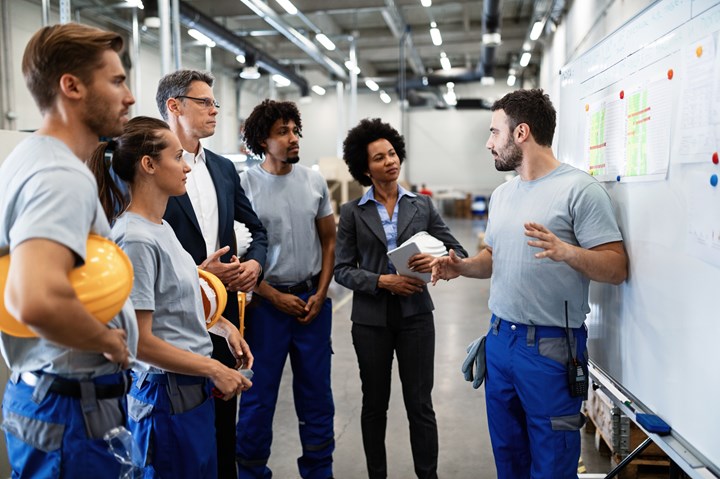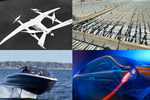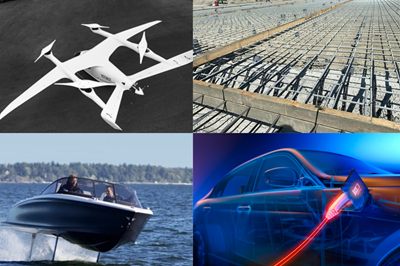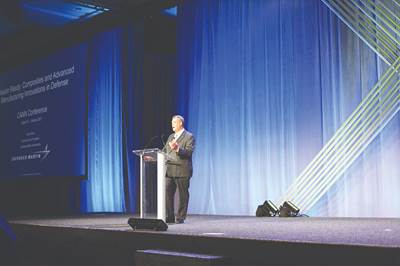
Photo Credit: Getty Images
The month of October offered up two great opportunities to reconnect with colleagues in the composites industry at live, in-person events. First up was the IACMI Fall Members Meeting in Detroit, Mich., U.S., early in the month (the first in-person version since January 2020), followed two weeks later by CAMX in Dallas, Texas, U.S., the first major in-person composites trade show and conference since CAMX 2019.
As I have noted in columns over the past 18 months, it is difficult to fully convey the attributes and advantages of composites versus other materials without the ability to touch, pick up and (try to) bend them. It’s hard to demonstrate how light and stiff something can be in a virtual environment. Moreover, while we were able to maintain some level of communication via the various virtual platforms we all used during the pandemic, nothing replaces the kinds of collaboration sparked by physical networking and exploration of ideas. Hopefully, we are headed toward a full return to in-person events, especially where exhibits and networking are key elements for success.
A major topic of discussion at both events was supply chain disruption, especially regarding raw materials, including resins and reinforcements. While the public at large is becoming increasingly aware of container ships stacked up at ports worldwide, and the shortage of computer chips limiting the availability of new vehicles on dealer lots, the raw material shortages in the composites industry are less well known. I heard one conversation where someone opined that “a polyester resin would work well for that application,” to which another party replied, “that assumes you can even get polyester resin right now.” (See CW’s updated survey conducted on the supply chain.)
We need a message for today and tomorrow focused on addressing climate change, increasing clean energy and improving the environment through sustainable and circular solutions.
We’ve been through various supply problems over the decades — frequent capacity/demand imbalances in carbon fiber come to mind, and the year multiple fiberglass suppliers performed furnace rehabilitation at the same time, unaware of their competitors’ plans — but we’ve always managed to get through it. With increasingly distant global supply lines, today’s situation seems dire, but I believe it will resolve itself over the next year.
Another topic of many of my conversations in October is the difficulty companies in the composites industry are having hiring people for open positions. The public sees this problem manifested in restaurant, hospitality and retail businesses, which are either closed or have reduced hours of operation or level of service. A common explanation is the low wages paid by such businesses, but in our industry, jobs paying what is considered a “living wage” and higher are also going unfilled.
When the COVID-19 pandemic hit, many sectors of the composites industry took initial blows to revenues, and reacted by laying off staff, including experienced personnel. Many older workers retired, found other jobs or went the independent contractor route, and so are unavailable or unwilling to return to their former roles as the industry ramps up. Schools, universities and suppliers of technical and professional talent, went to virtual learning models, restricting access to labs where practical experience could be gained. Industries reduced the number of internships on offer as well.
So how do we market the composites industry as a vibrant and exciting place to work, especially to a new generation that is increasingly being told that “plastics are the problem,” even though life cycle analyses prove otherwise, especially for durable polymers used in composites? In the past, we could advertise positions working on advanced fighter jets and missiles, gas-guzzling sports cars and carbon dioxide-emitting aircraft, and attract talent — but that message doesn’t work today.
We need a message for today and tomorrow focused on addressing climate change, increasing clean energy and improving the environment through sustainable and circular solutions. Emphasize, for example, that increasingly large wind turbines become CO2 positive within six months of operation and continue to deliver pollution-free energy for another 25 years. That reducing weight of electric automobiles by 10% yields an increase of 13.7% in vehicle range, and urban air mobility (UAM) vehicles need to be composite intensive to make battery power viable. Or that the key to pollution-free airline flights lies in green hydrogen as a fuel source, enabled by composite storage vessels. Also mention that weather-resilient infrastructure, including power poles, water systems, energy-efficient buildings and non-rusting bridges, roads and seawalls are all possible with composites. And, finally, that we can recover the energy and reinforcements from end-of-life (EOL) structures for use in new applications.
The composites-based outdoor equipment and sporting goods producers, as well as companies in the recycling space in particular, often have the right message that appeals to young workers and, as a result, are full of young, energetic talent. By spreading the story of our collective future, other segments of our industry can attract the employees that will ensure our success.
Related Content
Impressions and takeaways from JEC World 2022
Suffice to say that JEC World 2022, the “Big Show” for the composites industry, exceeded many expectations. Dale Brosius contemplates pervasive themes, conversations and takeaways from the international event.
Read MoreFinal perspectives and provocations
As Dale Brosius winds down his Perspectives & Provocations column, he reminisces on its start in 2013 and offers some parting thoughts on the trends and technologies that are shaping the composites industry.
Read MoreRead Next
The end is in sight for COVID-19: What comes next for the composites industry?
While the industry returns to some semblance of normality, a pre-pandemic “business as usual” does not seem likely. Dale Brosius ponders some of the questions that need to be faced.
Read MoreCAMX 2021 Show Daily highlights composite technology innovations
As the CAMX media sponsor, CompositesWorld reported on several new or improved developments on display, from CAMX Award and ACE Award winners, to the keynote speaker and interesting technologies.
Read MoreCW’s 2024 Top Shops survey offers new approach to benchmarking
Respondents that complete the survey by April 30, 2024, have the chance to be recognized as an honoree.
Read More
























